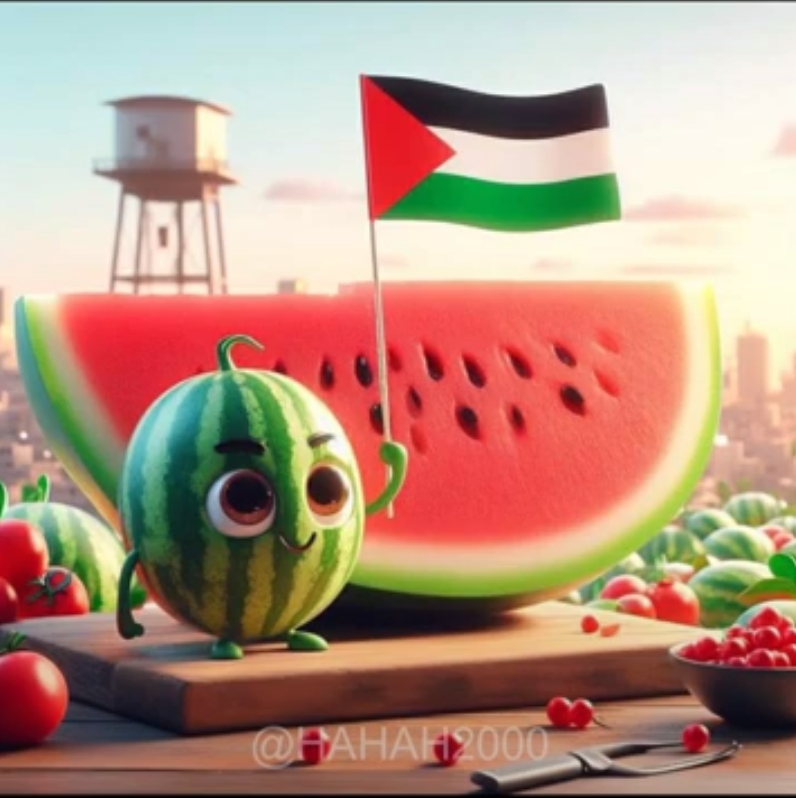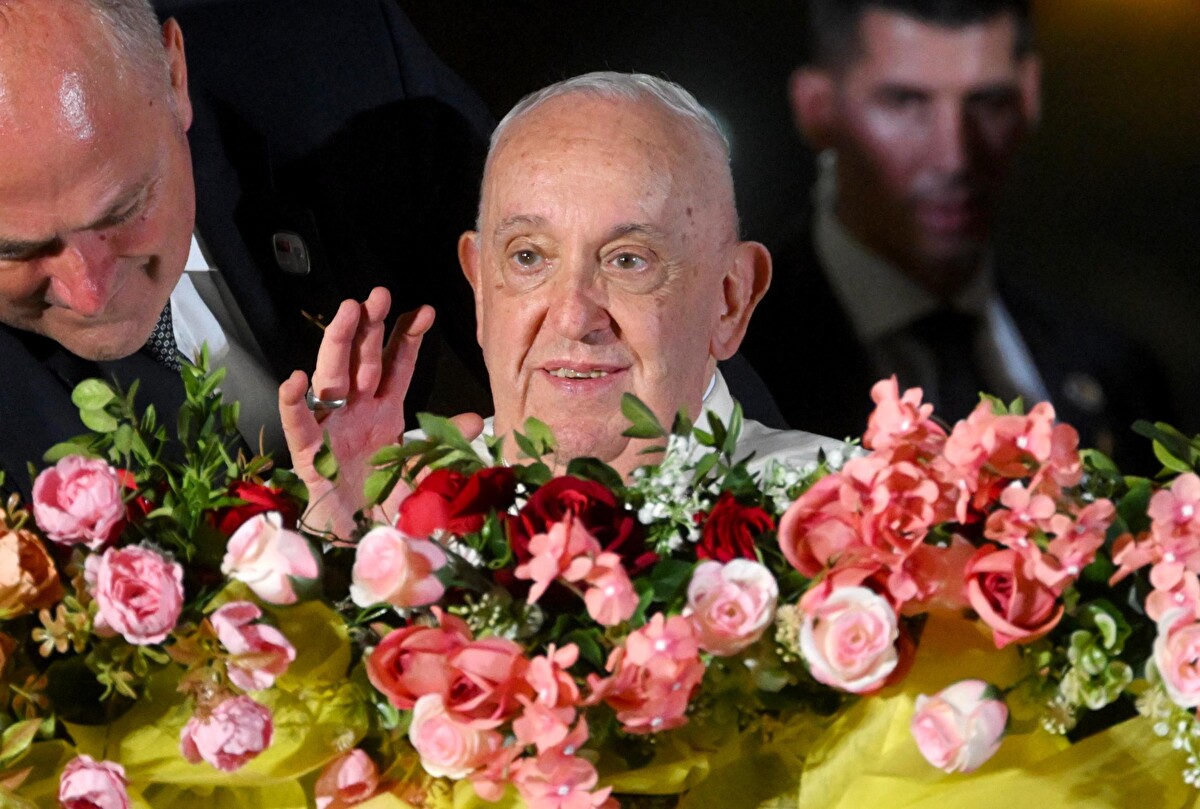Images of the watermelon are proliferating on social media and elsewhere. But it’s not about promoting the refreshing summer fruit. Instead, it’s a grave political statement, as it has become the symbol of support for Palestine in the ongoing vicious war that is seeing an unprecedented death toll as Israel mercilessly bombs Gaza in its mission to eradicate Hamas.
The fruit is painted on semicircles of cardboard at protests in support of Palestinians. The watermelon emoji appears next to the Palestinian flag in display names on TikTok and X, and thousands of Instagram users have liked an illustration of a watermelon wedge whose seeds spell “ceasefire now.”
While the fruit has now gone viral as the symbol of Palestinian solidarity, they have used it for decades as a symbol of identity and resistance, said Amani Al-Khatahtbeh, 30, the founder of the digital publication Muslim Girl. It is widely grown in Gaza and the West Bank, and it is the same four colors — red, green, black and white — as the Palestinian flag.
“It’s taken on a much more widespread understanding” since the beginning of the war, Ms. Al-Khatahtbeh said. “There are people that have absolutely no connection whatsoever to Palestine and Israel, but they’re still using the emoji because of what it’s come to represent on social media.”

The watermelon emoji is one of several symbols used as shorthand for deeper statements in the fierce social media debates about the war, and as is the function of symbols, it is more subtle and rich with layers of meanings than the Israeli and Palestinian flag emojis and the hashtags #IStandWithIsrael and #FreePalestine.
While the exact details of how the fruit became such a symbol are unclear, Sascha Crasnow, a scholar of Palestinian art and a lecturer of Islamic arts in the Residential College at the University of Michigan explained that the watermelon symbol has roots in Israel’s suppression of the Palestinian flag in Gaza and the West Bank.
In some versions of the story, watermelons were displayed instead of the Palestinian flag when it was effectively banned between 1967 and 1993, Dr. Crasnow said. The watermelon as a powerful symbol goes back decades. A 1993 New York Times article claimed that Palestinians were once arrested for carrying watermelon slices. Although this was later amended to note that the account could not be verified, it also cannot be disproved, but it does suggest the reach and resonance of the image.
Another version connects watermelons to an exhibition by Sliman Mansour and two other Palestinian artists that was said to have been shut down by Israeli soldiers in the 1980s. Mr. Mansour, 76, wrote in a recent email to The New York Times that an Israeli soldier had told them not to paint anything in the colors of the flag, including watermelons.
“The officer wanted to express his disrespect for these colors — red, green, black and white — and what they represent,” Mr. Mansour said. He said he first painted a watermelon for a 1987 book of Palestinian folk stories.
The circulation of both stories established watermelons as a feature of Palestinian art, Dr. Crasnow said.
The artist Khaled Hourani, who created a watermelon flag design for the Subjective Atlas of Palestine in 2007, said he had seen his work and other watermelon images proliferate with each flare-up in the conflict.
“Art is part of this conflict,” said Mr. Hourani, 57, who lives in Ramallah in the West Bank. The war is not only a physical one, he added: “It’s about culture, it’s about representation.” And we can add that art’s power to sway ideology has long been known as a potent weapon. Hence authoritarian regimes’ haste in censoring all forms of art. Symbols that on the surface appear to be unrelated to the subject of contention are a way of circumventing punitive measures, but also of subverting the prohibition.
Both the Star of David necklace and the kaffiyeh scarf have been embraced beyond the Middle East as a way of showing support for Jews and Palestinians during the war. The watermelon emoji has been popular among people supporting Palestinians while trying to evade what they argue is suppression of their speech on social media.
“The intention in using a watermelon is so that we don’t get censored,” said Ridikkuluz, 29, an Arab American artist who lives in Manhattan. Because social media platforms are unlikely to squash discussion of a common fruit, he said, the emoji can “subtly make its way through that crack in the door.”
As the watermelon symbol has spread, its meaning has been amplified.
“Instead of this subversive way of signaling to those in the know, it becomes a symbol to everyone else: We’re here,” she said. “It becomes this broader symbol of the scope of the individuals who are a part of this resistance.”
Plato knew something about the extraordinary power of art to subvert politics and ideology, and so he banished poets from his ideal Republic.












